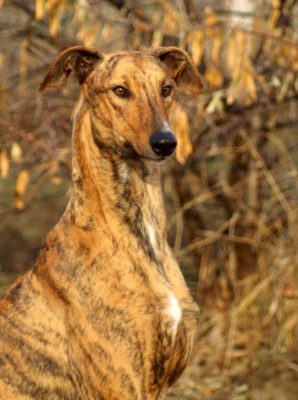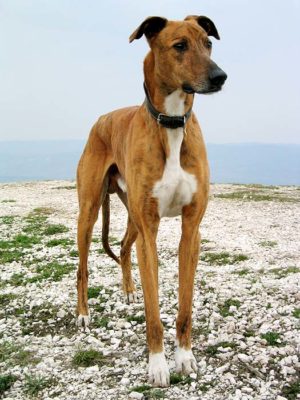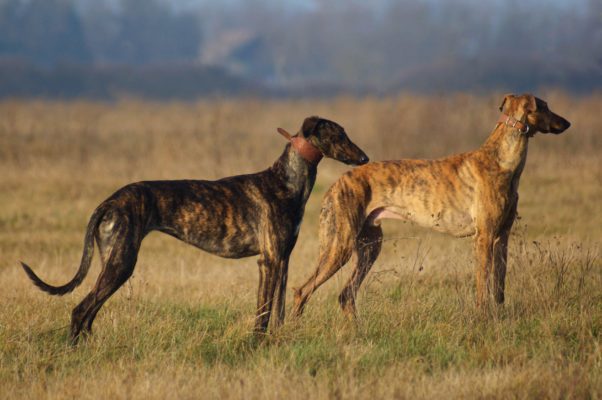Magyar Agár
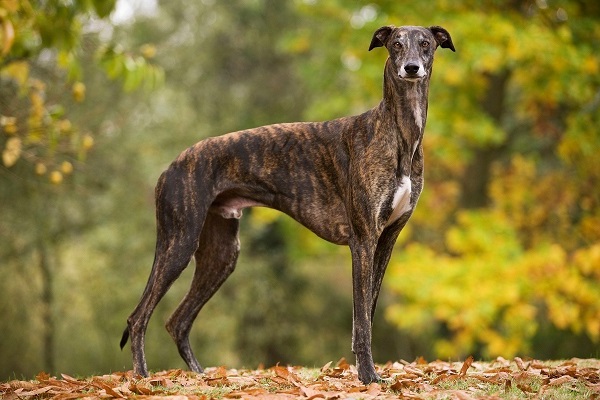
The Magyar Agár is an intelligent and reserved dog that needs socialization from an early age. They are loyal but not aggressive. The dog will not be in a hurry to show its warm feelings: it keeps wary when dealing with strangers. Magyar Agárs are always ready to defend themselves in danger to their family because they are excellent watchdogs. The Hungarian Greyhound is attached to “his” people. The dog feels incredibly homesick if he is away from his master for a long time.
Table of Contents
Breed Information
| Another Name | Hungarian Greyhound, Hungarian Agar |
| Origin | Hungary; Transylvania |
| Height | Males 65-70 cm Females 62-67 cm |
| Weight | 22-31 kg |
| Fur | Short, smooth |
| Color | Anyone |
| Lifespan | 12-14 years |
| FCI Classification | Sighthounds |
| Group | Watchdogs, hunting dogs |
| Price | $300-500 |
Breed Photos
Origin History
The Hungarian Greyhound, also known as Magyar Agár, is one of the oldest dog breeds inhabiting Transylvania and the Middle Danube Lowlands territory. During excavations in the Carpathian Mountains, archaeologists discovered the skulls of Hungarian Greyhounds. The remains’ study showed that they belonged to dogs that lived there more than a thousand years ago.
There are different assumptions about the origin of Hungarian Greyhounds. Their first owners, the Magyar Agár, constantly traveled on horseback and were accompanied on the road by their faithful hounds. The dogs were subjected to constant crossbreeding on the way, so it is almost impossible to trace their original point of origin. It is assumed that Magyar Agárs descended from Asian greyhounds in the tenth century. Hunters especially revered Hungarian Greyhounds because of their endless endurance and impressive speed.
At that time, there were two varieties of Hungarian Greyhounds – large and small. The small dog, or farmer’s agar, was found with commoners. It was used as a faithful guard and hunter of small animals such as hares and foxes. Magyar Agárs, owned by Hungarian nobles, were much larger and intended for hunting big game.
By now, the smaller peasant dogs had become completely extinct. Gradually the lines of large Hungarian Greyhounds also disappeared. However, in the nineteenth-century, measures were taken to protect the Hungarian Greyhounds: they were crossed with English greyhounds. The purpose was to restore the former glory of Magyar Agárs and improve the breed’s speed of running and endurance. Only in the middle of the XX century, the Hungarian Greyhound dog became famous not only in its own country but also beyond its borders. Today, Magyar Agárs participate in distance races throughout Europe but also remain useful in sport hunting.
Appearance
The Hungarian Greyhound is a medium-sized dog. Externally, the Hungarian Greyhound is not massive, but the dog is strong and has a strong muscular corset. Its long dry limbs are powerful enough to develop great speed. The head is wedge-shaped. The forehead is wide, sharply defined, and the dog has a long transition to the nose. The nostrils are large, capable of absorbing a large flow of air during training. The dark eyes are medium-sized, and the ears are large and thick. When calm, the ears look as if the dog is alert.
The neck of the Magyar Agár is medium-long; it leads to a muscular chest. The back is strong and straight, the tail is long, curved outward. The coat is dense, short, and the coat pattern comes in various colors, from monochrome to tiger. Despite its athletic physique, the Magyar Agár gait is elegant; long sweeping steps characterize it.
Character
The Magyar Agár is an intelligent and reserved dog that needs socialization from an early age. They are loyal but not aggressive. The dog will not be in a hurry to show its warm feelings: it keeps wary when dealing with strangers. Magyar Agárs are always ready to defend themselves in danger to their family because they are excellent watchdogs. The Hungarian Greyhound is attached to “his” people. The dog feels incredibly homesick if he is away from his master for a long time. This four-legged friend loves to bathe in attention and will himself be ready to share his love with the whole family. The Hungarian Greyhound is truly a true companion dog.
The Hungarian Greyhound is extremely obedient at home but on the hunt – a gambler, which should be taken into account on walks. After all, you never know whether the Magyar Agár will accept another animal as his friend or as potential prey. Suitable for cohabitation with a cat under the same roof, but the dog must grow up with it from childhood. Treats children in a friendly manner, although sometimes experiencing excitement when interacting with restless youngsters.
Care
A smooth brush can be used to groom a Magyar Agár’s short coat. This procedure should be performed at least once a week. Also, it is necessary to wipe the dog with a damp cloth to give the coat a shiny appearance. Molting occurs in spring and summer. It is not necessary to bathe the dog often.
Suitable for life in a country house and an apartment, but one must consider the historical past of the Magyar Agár. The Hungarian Greyhound is a fan of long-distance running, so it should be provided with at least an hour of active time.
Training
The Hungarian Greyhound is not suitable for an owner who has never dealt with greyhounds or hunting. The dog has a willful character: it will not obey commands without special training. Puppies must be trained as early as possible to develop the skill of obedience to their master. The Magyar Agár is easy to train because of its intelligence, especially with the right motivational techniques. Strength training should be combined with activities with interactive toys and puzzles.
Common Diseases
The Magyar Agár lives relatively longer than its greyhound relatives – about 12-14 years. There are many diseases to which the dog is prone:
- progressive retinal atrophy;
- hypothyroidism;
- epilepsy.
Nutrition
The Magyar Agár diet must necessarily include animal proteins – they are the plastic element for maintaining an athletic physique. For normal growth and development, the dog needs an intake of micronutrients and vitamins. It is better to choose dog foods that have a sufficient content of these substances.
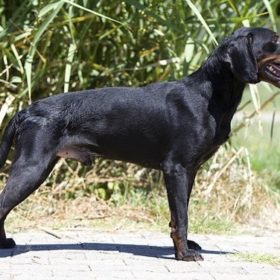 Montenegrin Mountain Hound
Montenegrin Mountain Hound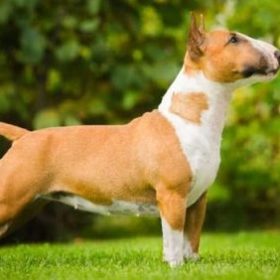 Miniature Bull Terrier
Miniature Bull Terrier Segugio Italiano
Segugio Italiano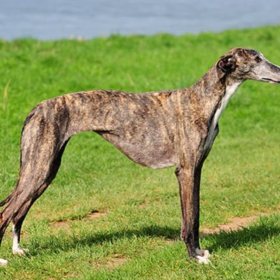 Galgo Español
Galgo Español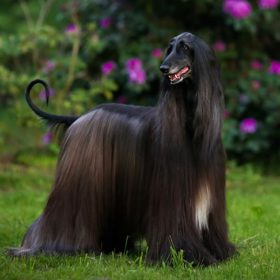 Afghan Hound
Afghan Hound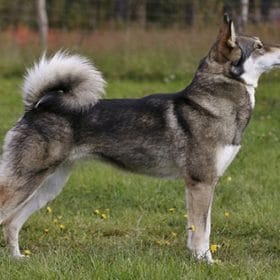 East Siberian Laika
East Siberian Laika